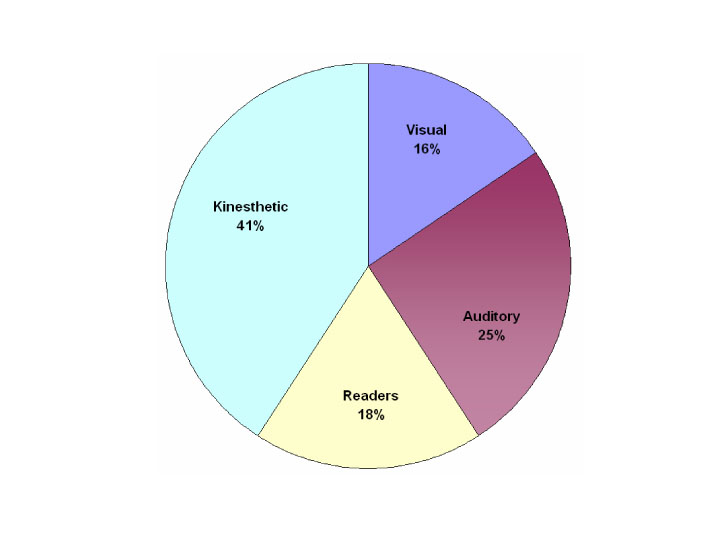VARK is an anachronism that stands for Visual, Auditory, Read/Write, and Kinesthetic sensory modalities. It is used to define the preferred perceptual preference of how people best learn new content.
Some people can easily switch from one communication preference to another, depending on the context of the content. These types of people are considered multimodal. However, most people have a strong preference for content delivered in a single modal.
Why is this important to a small business? It’s important because your content marketing efforts may not be aligned with the VARK modalities of your audience. To help you better align your content marketing to your audience, let’s explore each of the VARK modalities in a little more detail.
Visual/Graphic/Symbols Modal – 16%
People with an acute visual/graphics/symbol modal learn best by deconstructing graphical representations. They absorb new content by interpreting patterns, shapes, and relationships between pieces of information.
The following things are well suited for this type of learner
- Flowcharts
- Diagrams
- Infographics
- Maps
It should be noted that pictures, movies, or PowerPoint slides, while visual in nature, are not part of this modality.
Auditory Modal – 25%
People with an auditory perceptual preference learn best through the spoken word. They absorb new content by hearing the message first. However, much of the learning actually takes place when the person restates the discussion or when they recite it back.
The following things are well suited for this type of learner
- Lectures
- Listening to the radio, recordings, or podcasts
- Participating in group discussions
Reading/Writing Modal – 18%
People with this type of modal learn best by reading and/or writing. For example, they absorb new content by reading or writing reports, manuals, or PowerPoint and presentations. This modality is the essence of our educational system as it is the preferred learning style for teachers, and consequently, is overemphasized in society.
The following things are well suited for this type of learner
- Blogs
- Wikipedia
Kinesthetic Modal – 41%
These types of learners learn best by participating in hands-on activities. People with an acute kinesthetic modal absorb new content through examples, practice, demonstrations and personal experience.
The following things are well suited for this type of learner
- YouTube videos
- Case studies
As a content producer, it is wise to understand and match the appropriate modal to your audience. If your audience is primarily made up of athletes or cooks, who tend to embrace a more kinesthetic modal, then your content might be best delivered via a YouTube demonstration.
In contrast, if your audience is made up of lawyers, accountants, or teachers, who tend to embrace a reading/writing modal, then your content might be best delivered via a written blog post.
By understanding and applying the VARK principles, it is no surprise that my two sons (one an automotive mechanic and the other a sous-chef) and clearly Kinesthetic learners are both huge YouTube fans when it comes to trying to learn something new.
Many content providers, myself included, often develop content based on our own preferred perceptual preference and not that of our target customer segment.
Is your marketing content delivered in a VARK modal that is your preferred perceptual preference or that of your customer segment?
Should you consider providing your content in multiple VARK modals?












